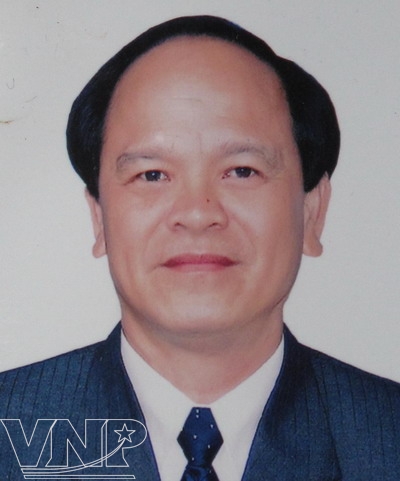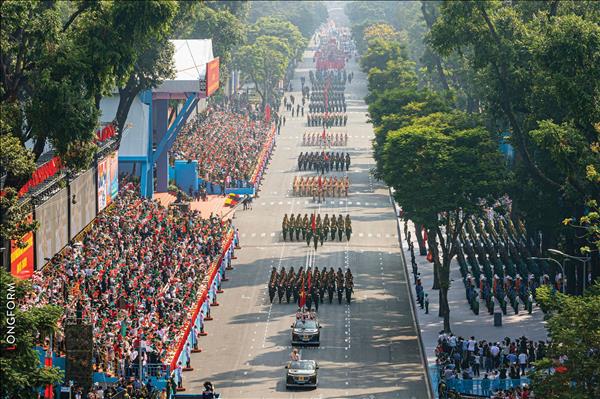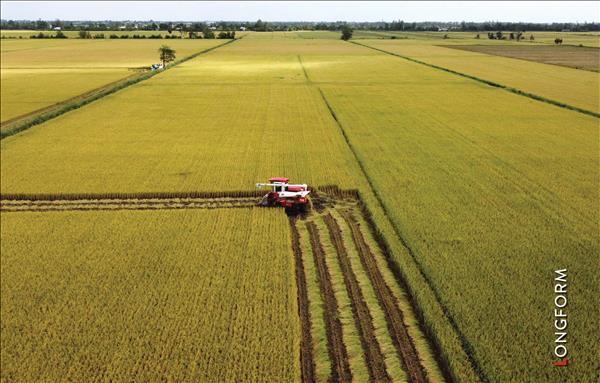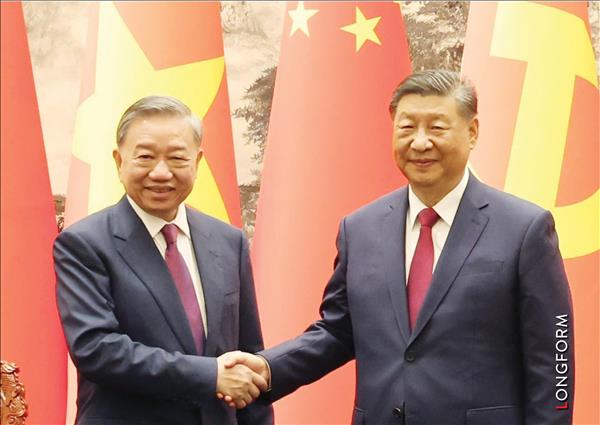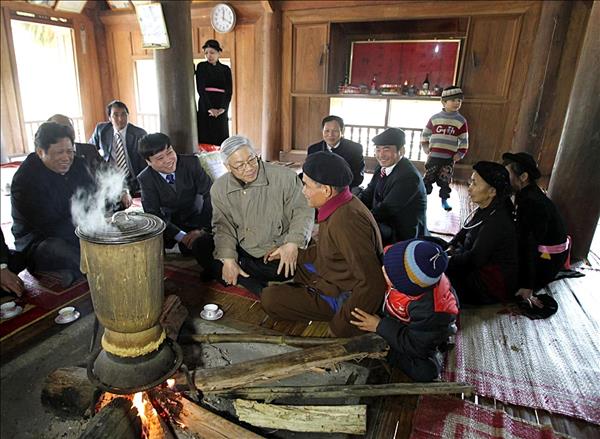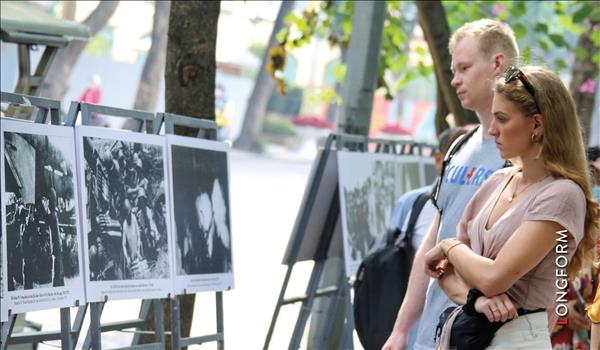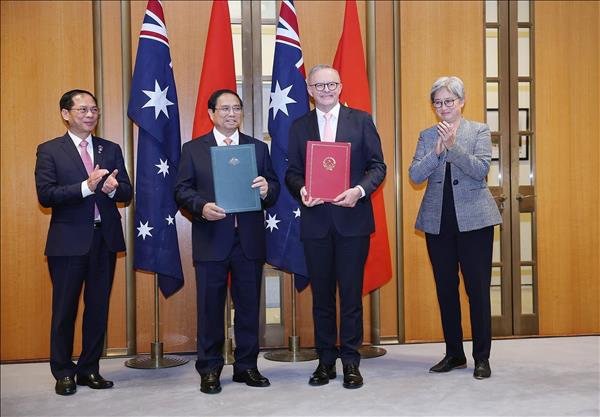Binh Dinh Province, the land of martial arts and literature and the homeland of plain-cloths hero Quang Trung (also known as Nguyen Hue) who was the preeminent leader of the Tay Son upspring movement in the late 18thcentury and the early 19th century, is stirring up a lot of interest because of its great tourism potential in the southern area of the Central region of Vietnam.
The land of martial arts
One of the most prominent imprints of the land is the system of heritage sites of the Tay Son Dynasty in the 18th century established by three brothers, Nguyen Nhac, Nguyen Hue and Nguyen Lu who were considered “Tay Son tam kiet” (lit. the three greatest leaders of Tay Son). The resounding feats of arms as well as military careers of the three brothers, particularly King Quang Trung during the process of establishing the Tay Son insurgent troops, training them and victories over the invaders created a glorious legacy for this sacred land.
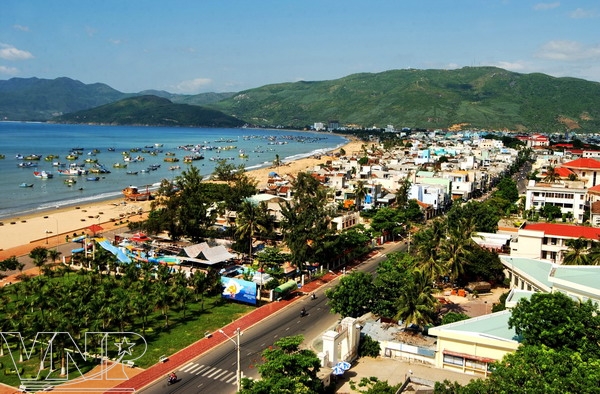 A corner of the coastal city of Quy Nhon. 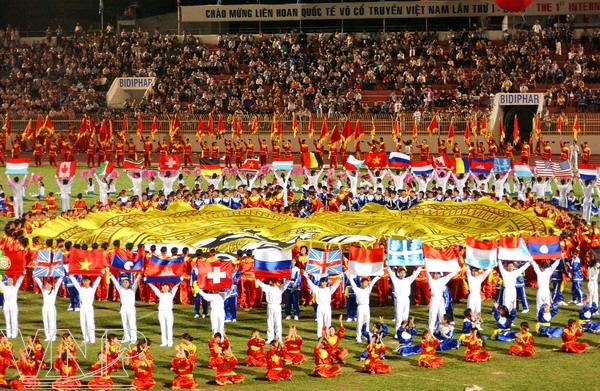 The opening ceremony of the International Traditional Martial Arts Festival held in Binh Dinh Province.  Reproducing the image of King Quang Trung riding the elephant to lead the troops to defeat the enemy at Dong Da Festival in Binh Nghi Commune, Tay Son District. 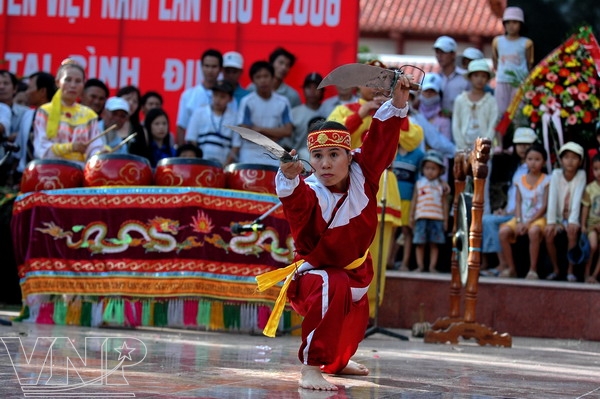 Performing Tay Son – Binh Dinh traditional martial arts. 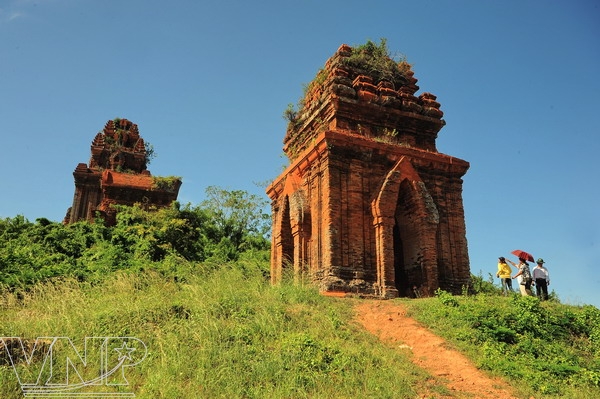 Ancient Cham towers in Phuoc Hiep Commune, Tuy Phuoc District. 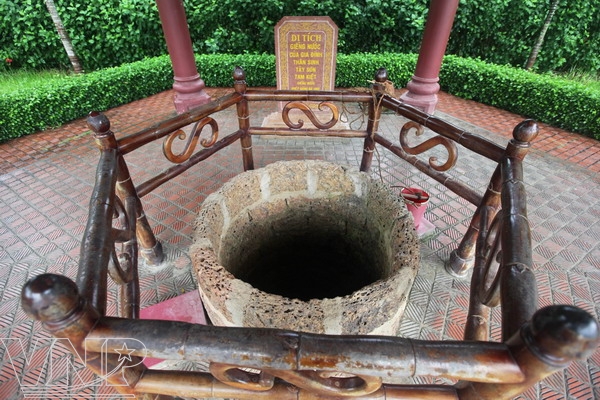 An ancient well from the Tay Son Dynasty in Quang Trung Museum (PHu PHong Town, Tay Son District). 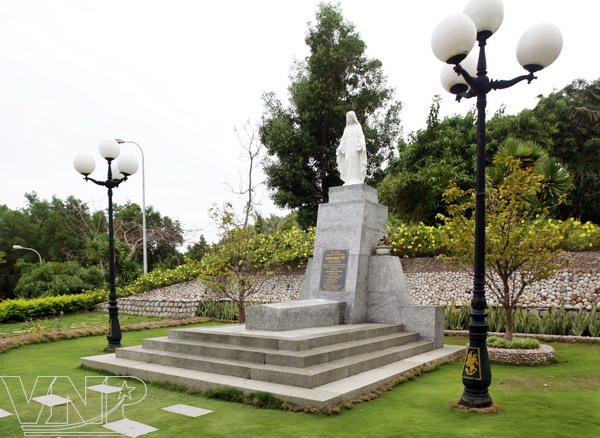 Ghenh rang Hill, Quy Nhon City is the place where famous poet Han mac Tu is laid to rest. 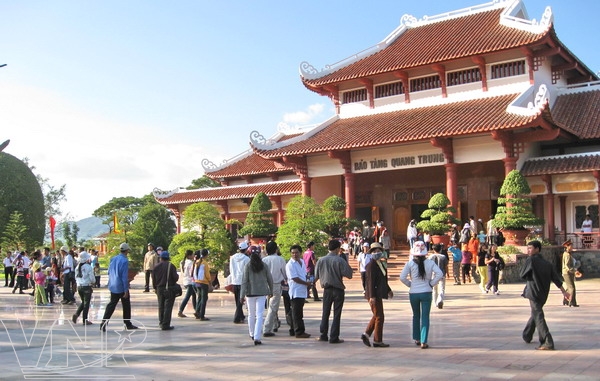 Quang Trung Museum in Phu Phong Town, Tay Son District preserves many objects in the Tay Son Dynasty. |
To recognize the merits of the Nguyen brothers, the Province built Quang Trung Museum in their native land of Kien My Village, Phu Phong Township, Tay Son District. Every year on the 5th day of Tet (lunar New Year Festival), tens of thousands of people nationwide flock to the Museum to attend the Dong Da Festival which is held to celebrate the historical Ngoc Hoi-Dong Da victory won by King Quang Trung and Tay Son troops, defeating 290,000 Thanh invaders in the spring of the Year of the Rooster (1789). The festival includes many cultural activities imbued with a sporting spirit, with performances in martial arts, Tay Son war-drums, martial arts music, boat-races, folk games, Tuong dramatic singing performances, etc.
For years, Binh Dinh has also been known as the land of traditional martial arts that has inherited the quintessence of the Tay Son martial arts schools, handed down from generation to generation. Many talented martial masters in Vietnam and the world were trained at martial arts clubs in this province. These clubs now not only attracts many young people from the region to practise martial arts but also have become interesting destinations for both domestic and foreign tourists.
To promote the movement of practising traditional Vietnamese martial arts in general and Binh Dinh martial arts in particular, and introduce international friends to the land with great tourism potential, since 2006 Binh Dinh Province has hosted the International Traditional Martial Arts Festival that attracted thousands of martial arts masters from dozens of countries around the world.
Besides the vestiges of the Tay Son Dynasty, Binh Dinh Province has many precious cultural legacies left by the ancient Kingdom of Champa. In Tay Son District still exists the vestige of Do Ban Citadel which was built in the late 10th century in the reign of King Yangpuku Vijaya, the last citadel of the Champa Kingdom.
The system of Cham towers in Binh Dinh with 14 towers built between the 11th -12th centuries has been evaluated as being the largest group of ancient towers in Southeast Asia. All the towers were built imposingly with delicate, mysterious sculptures, patterns and designs that invite interpretation. At present this complex of towers is being restored to preserve the values of Cham culture and archaeologists hope the site will eventually to be recognized as a world cultural heritage site.
Coming to Binh Dinh tourists will have a chance to visit some of 54 traditional handicraft villages to see with their own eyes unique and delicate fine arts items, go to Go Gang Conical Hat Market that is held at night under the alluring light of oil lamps and enjoy traditional dishes, such as Cho Huyen Nem with the sour and spicy taste, It cake and tasty Bau Da wine.
Going upstream on the Con River to visit Dinh Binh hydro-electricity lake project, a new tourist destination located amidst numberless hazy, green mountains. The romantic landscape around the lake that is clean and clear together with mysterious forests, Can wine and songs and dances of Bana ethnic people appeals to all visitors.
Evaluating the activities of the Province’s tourism sector, Nguyen Van Thien, Secretary of the Provincial Party Committee, said: “In recent years the number of tourists to the Province has increased 20% per year and the total turnover of the tourism sector has increased 24% per year. The province’s tourism potential and resources have been exploited and many sources have been mobilized, making an important contribution to the economic and social development of the Province and changing the face of the urban centre. In the coming years the Province will boost investment in building housing facilities, increasing the quality of services, developing human resources, promoting co-operation to form the inter-regional and inter-area products and boosting activities to promote tourism, all of which will hopefully increase investment interest.
Sea Potential
Besides the ancient cultural sites, Binh Dinh has strength in sea tourism. Going from Highway 1A and then Highway 1D (Quy Nhon-Song Cau Road) to arrive in Quy Nhon Sea, tourists will be amazed by a very impressive scene. The whole area looks like a sky with countless twinkling stars in the darkness. In the daytime the area becomes bustling with hundreds of ships coming and going and weathered looking fishermen drying nets or preparing to go out to sea.
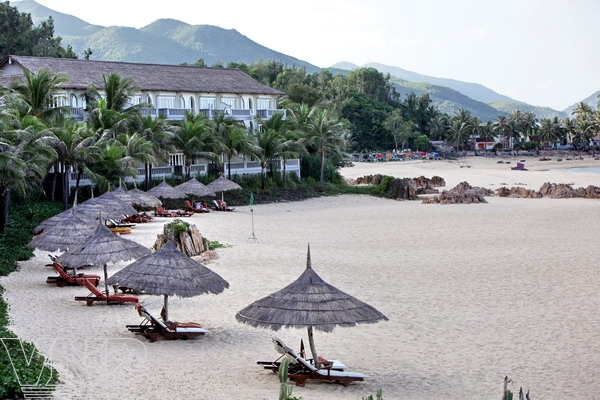 A corner of the Life Wellness Resort of Ghenh Rang Tourism Area. 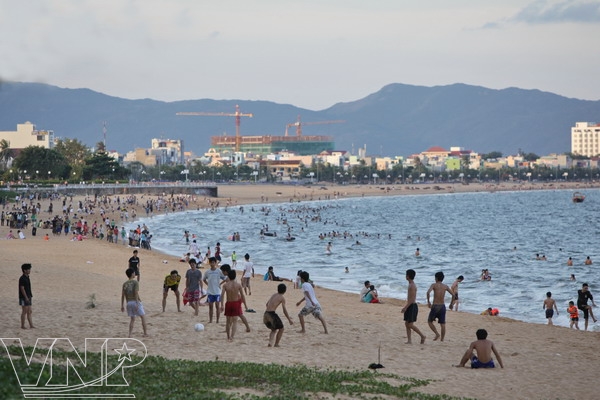 At Quy Nhon Beach. 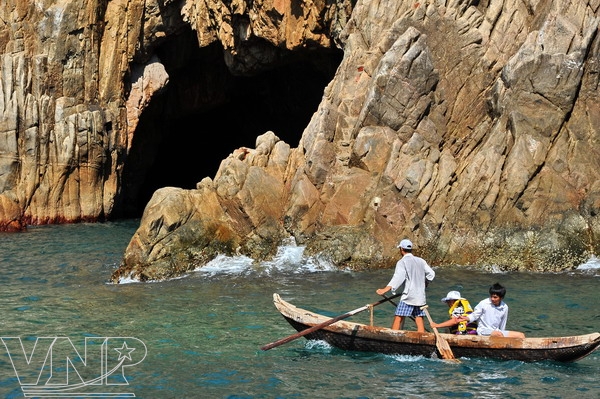 Tourists visit Yen (Salagan) Island. 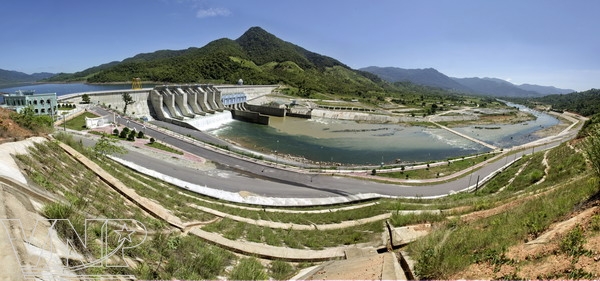 Dinh Binh Reservoir. 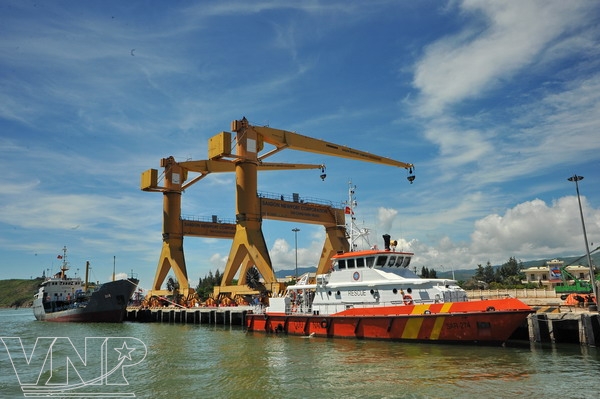 Quy Nhon Port. 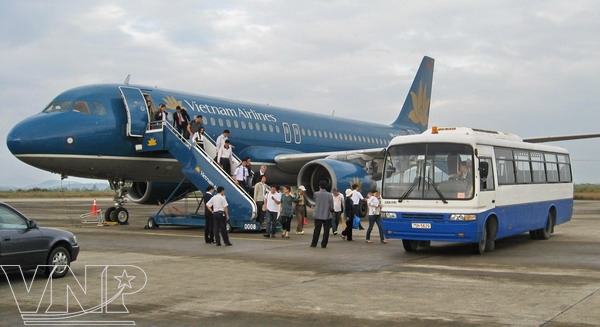 Phu Cat Airport. 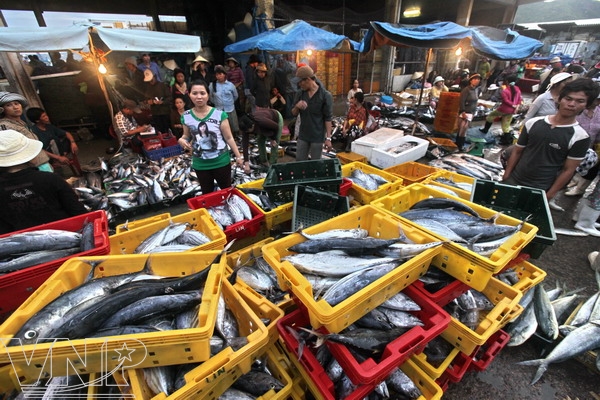 Ham Tu fish market. |
Seeing the sea from Xuan Dieu Road, the top of Ghenh Rang Hill appears through the clouds on the right of Quy Nhon City. At the foot of the hill, where famed poet Han Mac Tu is laid to rest, there are wonderful rocky cliffs running to the edge of the sea and quiet Hoang Hau Beach with small smooth pebbles. On the other side of Ghenh Rang is Quy Hoa Sea that is clean and peaceful with rows of poplar trees and golden sand banks, full of sunlight and wind. On the left side of Quy Nhon City there is a mountain range stretching to the sea, looking like the head of a dragon. Tourists can join the daily life of local people and go to the fish market at Ham Tu Wharf to see hundreds of varieties of fish caught from the sea. The fish market is often held at night and each day about 70 tonnes of fish are transported to other locations.
Along the coastal area of Binh Dinhh Province, there are about 33 small and large islands, each with its own unique beauty, such as Cu Lao Xanh with primitive corals and simple fishing villages and Yen Island on Phuong Mai Peninsula with spectacular natural caves. This island has 30 caves which are home to the Salangan which make their nests on cliffs. At present, the Province harvests about 450-500kg of Salangan’s nests from each crop, bringing about a great economic benefit.
The Province also owns De Gi Estuary in the East, one of the largest and most beautiful on the Binh Dinh Sea. Here local people annually hold the Cau Ngu (whale-worshiping) Festival at Nam Hai Temple to pray for a happy and peaceful life and bumper crops.
The next destination is the largest salt lagoon, Thi Nai, with an area of over 5,000ha. Here tourists can discover the biodiversity of the mangrove forest with hundreds of varieties of shrimp, fish, etc.
Apart from the advantages provided by tourism, Binh Dinh Sea also brings about a great economic benefit. It has more than 500 species of fish and sea specialities, including 38 species of high economic value, such as tuna, mackerel, Salangan’s nests, lobster, king crab, cuttle-fish, etc., to supply the domestic market and for export. Also, the rocky mountain area at the sea estuary has diverse mineral sources of great value for industries, such as granite with a deposit of 500 million m3, titan mineral sand in De Gi mine with a deposit of 1.5 million tones and white sand in Hoai Nhon with a deposit of 90,000m3.
With the diversity of tourism attractions plus the current economic potential and hard-working people, Binh Dinh promises to become an attracting destination of the Central region.
(Nguyen Van Thien, Secretary of Binh Dinh Provincial Party Committee) |
|
Stefanie Newpebaue, an Australian tourist. |
Story: Van Quy – Viet Y – Thinh Phat
Photos: Quang Minh – Quang Ha – Le Minh – Viet Y – Dao Tien Dat
Photos: Quang Minh – Quang Ha – Le Minh – Viet Y – Dao Tien Dat
Bài: Vân Quý, Viết Ý, Thịnh Phát - Ảnh: Quang Minh, Quang Hà, Lê Minh, Viết Ý, Đào Tiến Đạt

